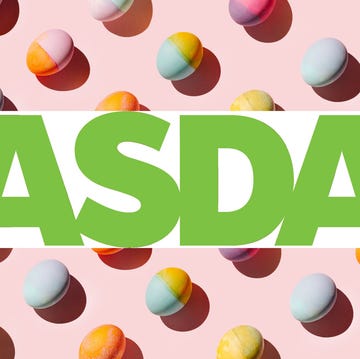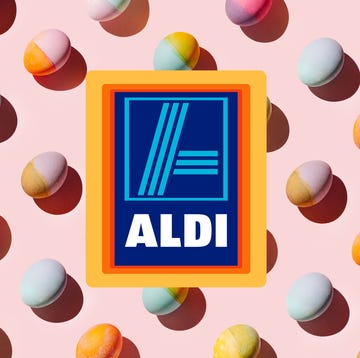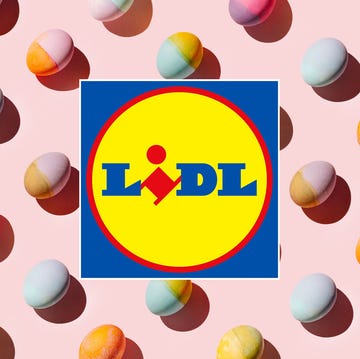Even for those of us who aren’t from a farming background, you only need to have watched a few episodes Clarkson’s Farm to understand the devastating impact that heavy and persistent rainfall can have on farmers’ harvests. And if ever there was a year when unusually wet weather has wreaked havoc on crops, this is it.
Figures released earlier this month by the Department for Environment, Food and Rural Affairs (DEFRA), reveal the extent to which this year’s harvest of certain key crops is down on previous years, including wheat (down 22% on 2023), winter barley (down 26%) and oilseed rape (down 33%). Overall, this year’s harvest is the second worst since 1983 and record-breaking rainfall associated with the effects of climate change is to blame, according to analysts at the Energy and Climate Intelligence Unit (ECIU). Tom Lancaster, the ECIU’s land, food and farming analyst has called on the new government to “invest in more sustainable farming” that could better withstand this kind of extreme weather and boost the UK’s food security.
So, what might some of these more sustainable methods of farming look like? One approach that is currently gaining momentum amongst the UK’s food growers and producers is ‘regenerative farming'. And if you haven't already heard the term being used to describe food produced in a more environmentally sustainable way, the odds are you soon will.
This month sees the launch of Trewithen Dairy’s Regen Milk, produced by farmers who follow a set of regenerative farming standards – it’s now on sale in over 600 Tesco stores across the UK. You may also have seen TV ads for Wildfarmed’s Life Changing bread range which claims to ‘transform lunchtimes and landscapes’. A champion of regenerative agriculture, Wildfarmed’s bread rolls and loaves are stocked by Waitrose in stores and online, and M&S uses its flour in some of its own loaves. The ASK pizzeria chain also uses Wildfarmed flour in its dough, and the Honest Burgers restaurant chain sources beef from farmers that use regenerative techniques.
It all sounds great, but what does ‘regenerative farming’ actually mean?
What is regenerative farming?
Regenerative farming is ‘any form of farming which at the same time improves the environment’, according to Groundswell, the yearly convention of regenerative farmers. That might sound like a fairly broad definition, but regenerative farming is underpinned by a set of core principles which focus mainly on improving soil health. These include:
- growing a diverse range of crops together (you could think of this as a food meadow)
- keeping soil covered with plants to minimise damage from the sun, heavy rain and frost, and because plant roots help support a biodiversity of bacteria and funghi that’s essential to soil health and to supporting food chains
- minimising soil disturbance (by ploughing less and using fewer chemicals, for example)
- using some grazing animals to help fertilise fields naturally
While the regenerative farming movement has been steadily growing over the last decade or so, many of the techniques used by producers who are farming in this way are actually quite old yet and are now being put into practice on modern farms.
"The farming system that has evolved over the past two generations has enabled us to feed a massively increased global population but has also had the unintended consequences of degrading soil, as well as harming the environment in other ways," explains Kate Henderson of FarmED, a not-for-profit organisation that promotes education about farming and food. If we want to be able to continue producing food without damaging the planet further, we now know we need to move towards a more regenerative way of farming, she adds.
Is regenerative faming better for the environment?
Through its focus on soil health, regenerative farming can also contribute to less obvious but equally important environmental benefits. These include flood prevention and better soil permeability – both things that this year’s heavy rainfall and its impact on crop yields have highlighted the importance of. "Healthy soil soaks up rainfall more effectively, which can help prevent flooding and also stops rainwater from running off the surface of the soil and washing soil and nutrients into our waterways," says Kate.
Soil health also plays a role in ensuring our farming systems are more likely to be able to adapt to the effects of climate change in the longer term and to rely less on the use of chemicals.
Some experts and organisations, including WWF, say that regenerative farming practices also have a role to play in reducing the greenhouse gas emissions from farming and in helping to tackle the climate crisis. WWF head of food system transformation, Sophie Bauer, also points to the potential nutritional benefits of regeneratively farmed food: "The healthier the soil, the healthier the food, meaning that food produced with regenerative techniques hold more nutrients than conventional methods."
Is regenerative farming certified?
At the moment, there's no certification scheme for regeneratively farmed food in the UK akin to organic certification, for instance, which is both legally binding and independently assessed. However, initiatives are emerging elsewhere in the world, such as the Regenerative Organic Certified scheme in the USA, which claims to have certified more than 1,500 products.
For UK shoppers, though, the lack of certification and standardisation means it’s not always clear exactly what you’re getting when you buy regeneratively farmed food. "At the moment, we have a situation where farmers can pick and choose which regenerative farming practices they adopt and to what degree, so in practice there’s huge variation in what constitutes regenerative farming," explains Vicki Hird, strategic lead, agriculture, at The Wildlife Trusts. "This is confusing and worrying for consumers in terms of transparency and accuracy; at the moment there's a risk of greenwashing."
How can I support regenerative farming?
Vicki is hopeful that the UK will see a regenerative farming certification in the future. Until then, though, it falls to consumers to do the legwork needed to research the companies – or the farmers, if you’re buying direct – that we’re getting our food from.
Wildfarmed co-founder Andy Cato highlights the role that consumers can play in supporting models of farming that are better for the environment: "The success of the regenerative movement will ultimately depend on consumers who are informed, who look for opportunities to directly support farmers who are making a difference, who can see through unsubstantiated claims and who understand that every time we eat we shape the future of the planet."
Here are three things you can do now to support regenerative farming:
- Check if the brands whose food you’re buying have a set of regenerative farming standards that are easy to find on their website and which are independently audited – Wildfarmed, which grows and sources wheat farmed using regenerative practices, is one organisation that does.
- As there is some crossover between certain elements of regenerative farming practices and the standards underpinning other certification schemes, including organic, LEAF and Pasture for Life, looking for these logos on food is also a step in the right direction.
- You may be surprised to learn that what you choose not to buy as well as what you do buy can help support regenerative farming. Avoiding ultra processed foods, which are likely to have been produced using very cheap ingredients that are have been farmed in ways that are more damaging to the environment, is a good start, says The Wildlife Trusts Vicki Hird: "Eating a more sustainable diet – buying fresh produce, cooking from scratch and relying less on ultra processed foods – is another way to better support farmers and to contribute to the transformation of our food system."














